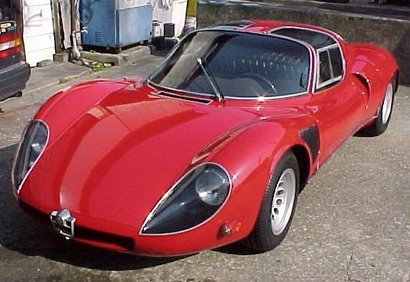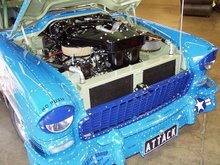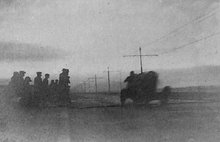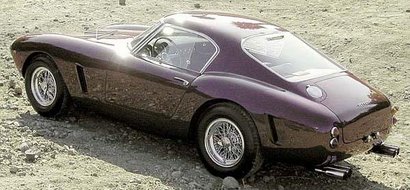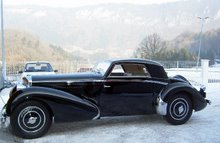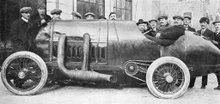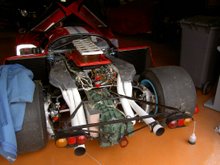
 Well, would you like to try it?
Well, would you like to try it? Those of you who have read my series on developing the Fulvia engine, might recall that in Part VI, I mentioned as a possible option, the use of Amal motor-cycle carburettors.
The Amal carburettor is a simple but effective device. Fuel is regulated by means of a single needle and jet arrangement, as in the S.U. carburettor, and the Amal too has a piston free to move vertically. The difference is that whilst the S.U.’s piston is raised by the manifold depression, the Amal’s is lifted by the throttle cable – there is no butterfly - so at full throttle there is a completely clear passage. The carburettors were available in bore sizes of up to 42mm.
Apart of course from motorcycles, the Amal was used on cars before the Second World War, notably by the extraordinary Freddie Dixon on his very fast Rileys that raced mostly at Brooklands. And in the 1960s it was possible to buy tuning kits for Minis that incorporated a pair of Amals.
Perhaps the most successful application, certainly in terms of achievements, was in the Vanwall four-cylinder 2.5 litre Formula one car in the late 1950s. However, this was an application with a difference: the carburettors were used solely as throttle bodies, since the engine was fitted with a Bosch fuel-injection system. Sorry about the small picture but larger versions are available from the source (at a price).

The Vanwall engine with its Amals
It seems that Amals are are still available here and here although I suspect that the larger ones might be difficult to find, but there are also modern Japanese carburettors manufactured by the likes of Mikuni and Keihin which are similar in many respects. Another possibility is Dell'Orto which still manufactures single choke motor-cycle carburettors. Remember that because the Amal presents a clear path a smaller diameter will probably suffice.
To conclude this short piece I should like to add a little about the formidable racer whose pictures appear here. This car is known as the Parker-GN. GN (Godfrey and Nash) was a small company that manufactured “cycle-cars” in the early 1920s. Usually powered by a vee-twin Matchless or J.A.P. engine, the cars featured a very effective gear-change mechanism and chain drive and thanks to their light weight, went very well for the time. Around 1925 the founders, H.R. Godfrey and Captain Archie Frazer-Nash separated, with Frazer-Nash going on to make the famous cars that bore his name which, up to 1939*, still used the chain drive system; later he designed various hydraulic devices including a famous gun turret. Godfrey went on to make H.R.G. cars which achieved some fame ceasing some time in the 1950s. They, like Frazer-Nashes, are very valuable now.

The Cirrus engine showing the four early Amal carburettors
The Parker G.N. is rather different: it is, rather improbably it must be said, fitted with a Blackburn (or De Havilland) Cirrus aero engine. This is an air-cooled four-cylinder of around six litres capacity, and as may be seen in the pictures, fitted with four Amal carburettors. I have seen this car racing several times in the capable hands of Richard Scaldwell and believe me, it is seriously fast!
There are some brave men around.
Sadly I have never heard of anyone fitting a Fulvia with Amals, but the principal appeal is that by staggering them the disadvantage of the uneven length ports could be overcome.
If any one has heard of a Fulvia being thus equipped I would love to hear about it.
* The company had since been bought by the Aldington brothers who founded AFN, the famous Porsche dealers (AFN = Archie Frazer Nash).









